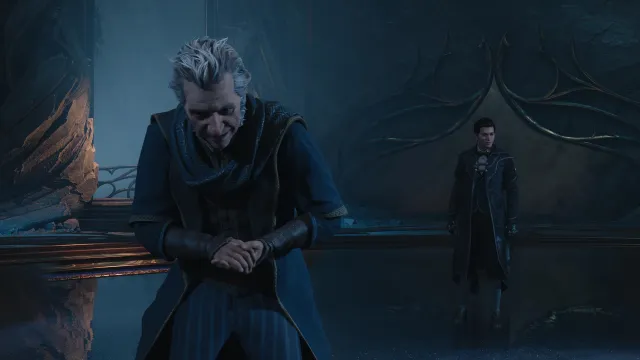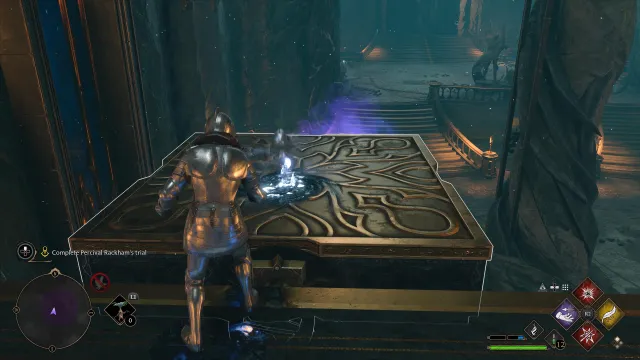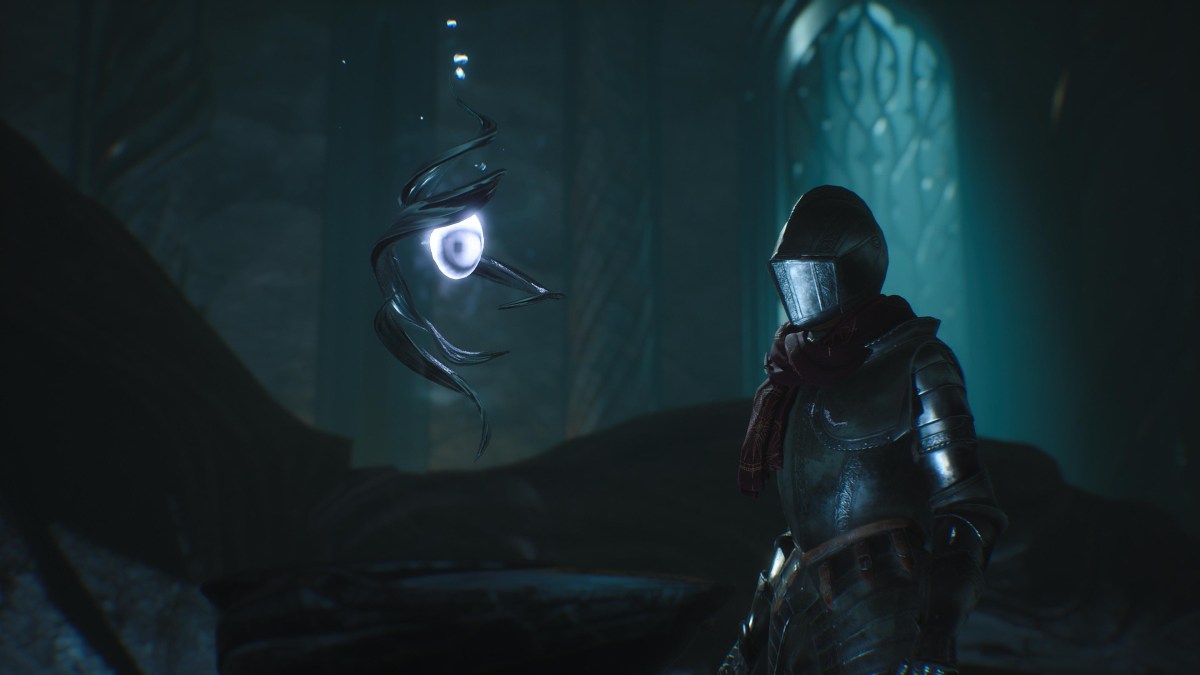Legacy indeed
The Harry Potter franchise has seen tremendous ups and downs: the likes of which stand out even among other multi-billion-dollar franchises. I remember reading the first book in a day (the first time I had ever done that) and witnessing the long lines at book stores every time a sequel would hit the shelves. With how fractured media is now, we may not ever see a collective phenomenon like that again in our lifetime. I also recall barely containing my laughter at an insanely convoluted plot point in Fantastic Beasts: The Crimes of Grindelwald; and, after hearing someone describe the core of Cursed Child, refusing to believe it was actually real.
Hogwarts Legacy lies somewhere in the middle of that wild ride.

Hogwarts Legacy (PC, PS4, PS5 [reviewed], Switch, Xbox One, Xbox Series X/S)
Developer: Avalanche Software
Publisher: Warner Bros. Games
Released: February 10, 2023 (PS5, Xbox Series X/S) / April 4, 2023 (PS4, Xbox One) / July 25 (Switch)
MSRP: $59.99 (previous generation), $69.99 (current generation)
[For a note on our stance on coverage of Hogwarts Legacy, read our statement here.]
Although they had a lot of help with the development of Hogwarts Legacy from satellite studios, it’s fascinating to see Avalanche Software in this position, making an expansive open world project. Disney Infinity was certainly on the cusp of it, but was mostly a sandbox-driven experience: this is something else. With help, they’ve discovered the secret sauce that helps a lot of open world games stand out above the crowd, but also succumbed to a lot of tropes; and backed themselves into a corner that begs for some quality of life patches. If you’ve been waiting for a Harry Potter game though, this is it. It’s wrapped in a flawed open world shell, but that game came all the same, and a lot of people will likely want to experience it.
The music, presentation, and myriad lore bits really make it. It’s got Gringotts. It’s got Hogsmeade. And of course, Hogwarts, with expansive detail. The world has a heavy synergy with the films in a good way (chiefly from the refrains of John Williams’ soundtrack), without being too cloying. The 1890s time period helps, as they can weave in familiar names like “Weasley,” while creating their own signature stamp on this particular world. It’s a really clever choice that pays off.
It also has some bog standard open world concepts, like Detective Vision (cloaked as the Revelio revealing spell), a light stealth system that often doesn’t justify its existence, a map filled to the brim with pins that can be a pain to navigate, and a very strange gear/equipment system that has a limited amount of slots (tying more inventory space to a questline). I found myself fighting Hogwarts Legacy at points, but then settling into the sometimes wonky game systems. The main thing to keep in mind is that a lot of these mechanics are streamlined. None of them creep up so badly that they actively ruin the game, and by the time you’re annoyed, something else will pop up vying for your attention.
That’s because much of Hogwarts Legacy is restrained, which is unique in an era of open world bloat. There are just enough ingredients to warrant a planting and harvesting minigame, without getting dizzy looking at an endless crafting menu. The game has just enough beasts to coax players to rescue and care for them in your personal space (essentially an apartment in The Room of Requirement), and so on. If you really dislike one game system you can often ignore it, and shift your focus to something else. Like, for instance, the talent system and your approach to combat.
Combat seems underwhelming at first, but on higher difficulty levels with more spells to command (and some talent points for good measure, which you get way too late into the game), I similarly settled in. The existence of a combo system is presented as a less elegant character-action mechanic, but the things it enables do allow for a number of different playstyles and approaches to conflict.
It’s all much more stylish than I expected. Blocking attacks and countering feels satisfying and weighty, and there are a ton of spells to experiment with, most of which are viable to use (and can host upgrades). There are a lot of strategies to peel back, like which enemies are higher priority targets, and how to use debilitating spells like frost or levitation to take them out of the equation (while you field dodges flying across the current battle arena).
Positive reinforcement really helps the core game loop. There are challenges to complete nearly everywhere you go (and in many fights), and most of them reward you with something substantial (like a spell, which in turn unlocks new questlines), on top of more rewards for finishing the challenges. There’s also a full transmogrification system (transmog/glamour/cosmetic outfit customization) and an actually useful breadcrumb trail (an optionally triggered on-screen path that shows you where to go next) on day one. In my playthrough, I was constantly chaining activities and discovering new things. It’s strange, but Hogwarts Legacy balances a lot of those aforementioned hang-ups with a steady firehose of rewards, more so than a lot of stingier modern open world projects.
Recently the Harry Potter franchise hasn’t had a good rep in terms of narrative coherency (to say the least!), and that applies to roughly half of Hogwarts Legacy‘s storyline. So there are two tales at play: a clumsily-told uprising led by a generically-bad goblin named Ranrok, and a morality tale not unlike the story of The Deathly Hallows from the core series. The latter bit deals with events that played out in the past, and there is an air of an actual mystery to it that I enjoyed uncovering.

They do intertwine (through the always-present allure of the Dark Arts as a shortcut for life’s problems), but the Ranrok throughline never really has anything interesting to say, nor does it contain many nuances. There’s even a cringey line of dialogue from the player character that exclaims: “not all goblins [are like this]” to another obviously-disturbed classmate. Can you guess where that particular thread is going?! Tepid reactions to casting unforgivable curses (which are thrown around in the late game and in a peculiar DLC) are par for the course.
I get that the team wanted an obvious big bad, but they could have just avoided the goblin thing entirely. Much of their purpose is to provide a mustache-twirling faction to fight, but with human Dark Wizards mixed in (another group working in tandem with Ranrok, which has a link to the other storyline); a lot of their agency is taken away to the point where goblins didn’t even need to be there at all with a few minor tweaks. Much of the storyline doesn’t deal with Ranrok at all, and when he does show up, it’s usually to bark a bit of expository dialogue, then vanish.
When the game chills out, it’s really easy to just settle into this world, which is much more expansive than I expected it to be. A large swath of the land beyond Hogwarts is playable, and there are some genuinely interesting sidequests to find, with the option to fast travel or fly/ride around on a small subset of mounts (the big ones are a broom and a Hippogriff). At one point, I flew around for roughly three hours and didn’t do any actual objectives at all. I can’t remember the last time I did that in an open world game.
Many of the better core scenarios hit those same notes of wonder. One standout includes a quest where you rescue a Hippogriff from poachers with a classmate, then subsequently fly over the Hogwarts Express train while it’s running, with music playing like it came straight out of the films. Classes are filled with silly banter, and aren’t so prolonged that you get bored of going to them. Then there’s the handful of story missions that shake out like a rudimentary Zelda dungeon, with crate manipulation and boss battles to boot. It’s enough that I’m interested in playing through with another house eventually (that, albeit, contains minimal differences) after my initial Gryffindor run.

Hogwarts Legacy is a sometimes unremarkable open world game that’s severely uplifted by its dedication to the best parts of the source material. It’s one of the most atmospheric IP-based games I’ve ever played, which makes it all the stranger that a lot of the mechanical foundation feels like it’s from the late 2000s.
[This review is based on a retail build of the game provided by the publisher.]













Published: Feb 10, 2023 12:00 pm